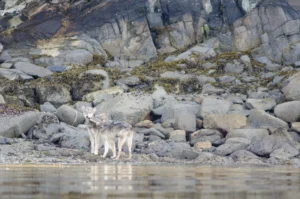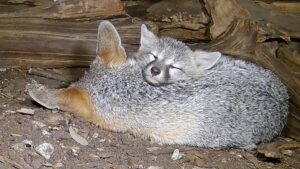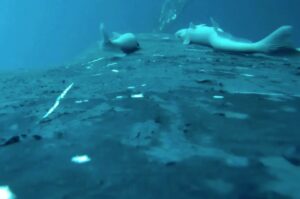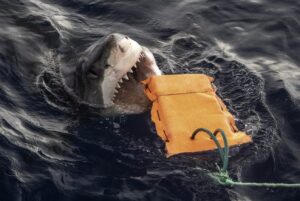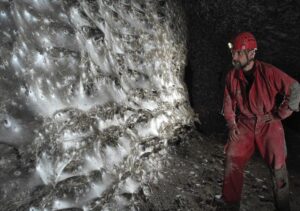Today, April 25, marks World Penguin Day — an opportunity for many wildlife organizations to tout conservation efforts for these charismatic, amphibious birds.

Gentoo penguins. Photo: Arne Beruldsen
It’s nearly winter in the southern hemisphere, and April 25 coincides with Antarctic penguins’ annual northward march to the sea.
Penguins are some of the hardiest and most adaptable birds on the planet. But like all wildlife, they are not impervious to all things. Rising global temperatures, lost or discarded fishing equipment, and ocean pollution pose significant threats to many penguins’ existence.
Experts say that of the 18 penguin species, 5 are endangered — Galapagos, African, northern rockhopper, erect-crested, and yellow-eyed — and another 5 are threatened.
Recently, an Antarctic expedition discovered a newly settled gentoo penguin colony. Researchers found that habitat loss forced the Gentoos’ out-of-character exodus upon them. Rapidly rising temperatures unequivocally caused their habitat loss.
Penguin species and locations

Image: Animal Spot
Penguins (order Sphenisciformes, family Spheniscidae) include aquatic, flightless birds that are native exclusively to the southern hemisphere.
While many colonies reside in colder climes like Antarctica, others are indigenous to more temperate zones. The Galapagos penguin lives just south of the equator, making them the northernmost penguins. In contrast, a colony of Adelie penguins found near Cape Royds, Antarctica, is the southernmost.
As noted above, 18 species make up the penguin family. Below are the regions where most of the world’s penguins are found.
Antarctica
Five species spend time on the Antarctic peninsula, but only emperor and Adelie penguins live there year-round. The other three — chinstrap, Gentoo, and macaroni penguins — visit the peninsula, but they breed on Antarctic and sub-Antarctic islands further north.
Australia

Little (or ‘fairy’) penguins reside in Australia and New Zealand. Photo: EQ Roy
Though recent evidence shows that ancient penguins likely originated in Australia and New Zealand. Today, just one species calls Down Under home — the little (or “fairy”) penguin.
Some little penguins nest along the mainland’s southern coast, but most colonies live on Australia’s outlying islands to the south.
Bounty and Antipodes Islands
The Bounty and Antipodes Islands, deep in the South Pacific, are erect-crested penguins’ only known breeding grounds. Not much is known about their migration patterns because of the extremely remote location.
Falkland Islands

Magellanic penguins. Photo: Irina Brester
The Falklands, a remote archipelago south of Patagonia in the Atlantic Ocean, has five species — Magellanic, rockhopper, Gentoo, king, and macaroni penguins. The Falklands house the world’s largest Gentoo population. Their numbers have risen substantially in the last two decades — a trend that’s refreshing but rare.
Galapagos
Off the coast of Ecuador, the Galapagos are homes to the Galapagos penguin — a slight and cave-crawling variation of the bird. Only 600 breeding pairs exist in the wild, making this northernmost penguin species one of the most endangered.
New Zealand
Perhaps surprisingly, New Zealand has four penguin species — little, snares, yellow-eyed, and Fiordland. Most New Zealand penguin colonies exist along the South Island and outlying southern islands, where cold currents are available.
The yellow-eyed penguin is the largest in the region. Next to the Galapagos penguin, it’s also the most endangered.
Southern Africa

African penguin. Photo: Louie Lea
Just one species is known to Africa — the African penguin. For most of history, African penguin colonies lived on islands along the southern coast. But, in 1980, two settlements were established near Cape Town, South Africa.
Although the species is decidedly endangered, the South African colonies are doing relatively well. Researchers believe that an uptick in humans to the region has driven back some of the penguins’ natural predators.
South Georgia and the South Sandwich Islands

Macaroni penguins. Photo: Anton Ivanov
None of the several species that frequent South Georgia and the South Sandwich Islands are year-round residents. However, some impressively large colonies breed at both spots.
Chinstrap, king, and macaroni penguins gather in dense groups to mate there. Recent estimates indicate that more than a million pairs of macaroni penguins breed on the islands.
Tristan da Cunha
Tristan da Cunha is a series of small islands in the South Atlantic, equidistant from Africa and South America. It is the most remote island chain in the world. Nonetheless, it is home to some 27,000 northern rockhopper penguins.
Unfortunately, northern rockhopper populations have been on the decline since the 1950s, mainly due to rising temperatures and the reduction of prey. The northern rockhopper is considered endangered.
Some facts about penguins

Two Gentoo chicks rest up. Photo: K. Nelson
- According to various studies, penguins are the world’s most popular birds. (Puffins are second on the list. There’s something that draws people to flightless, comical-looking birds.)
- Penguins are exceptional divers. They can dive up to 50 metres deep and stay underwater for up to 20 minutes.
- Penguins spend one-half to three-quarters of their lives at sea. When seaborn, Magellanic penguins can travel up to 16,000 kilometres searching for food.
- Some penguin colonies have returned to the same breeding grounds for thousands of generations — they are absolute creatures of habit.
- Parent and chick penguins share unique chirps, which allow them to locate one another among the crowd.
- When preparing for a dive, the emperor penguin can accelerate its heart rate to 250 beats per minute, which courses oxygen through its body. Once submerged, it can conserve oxygen by slowing its heart down to 6 beats per minute.
To learn even more about these exceptional birds, check out the below video, courtesy of the Antarctic and Southern Ocean Coalition.

